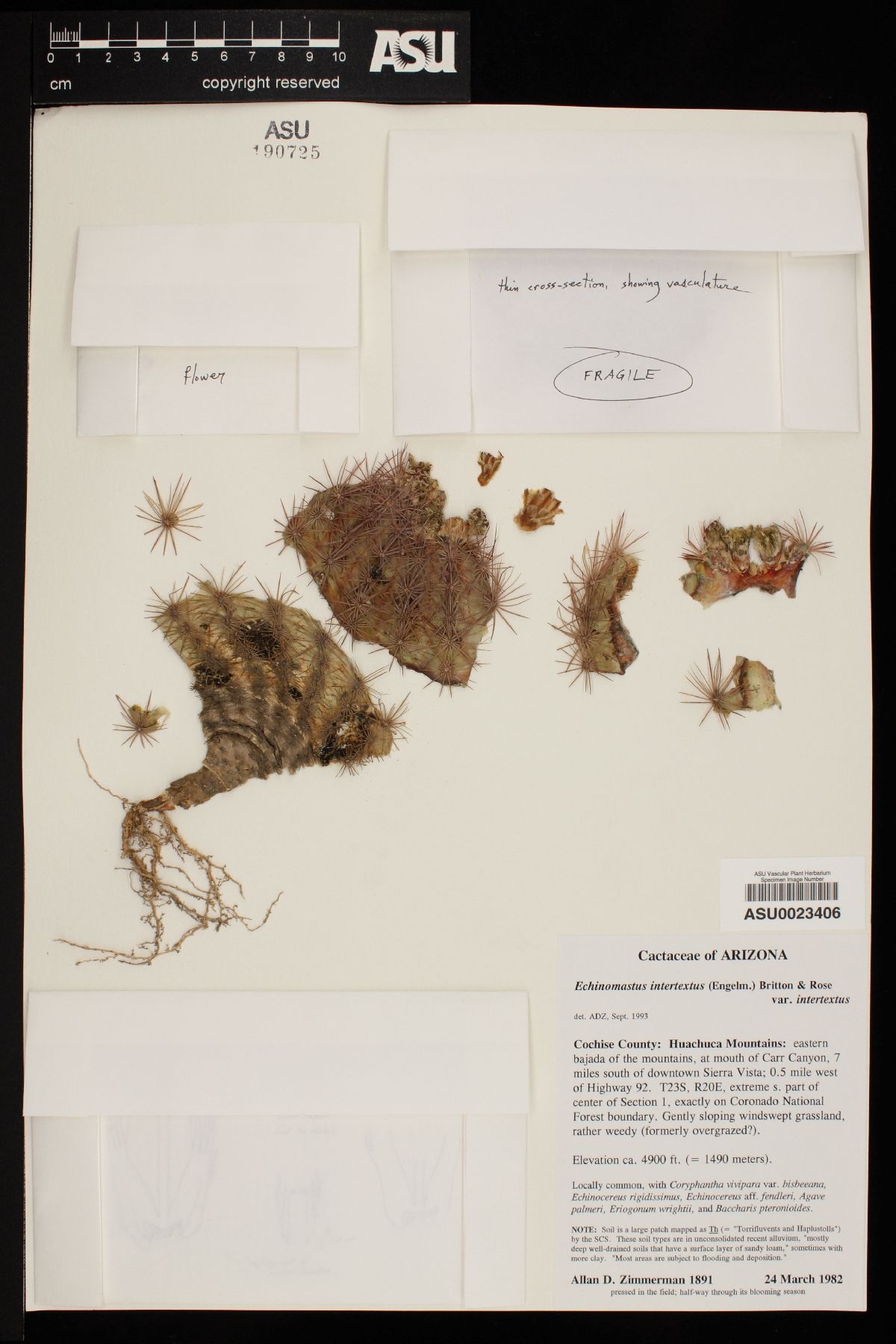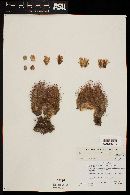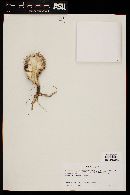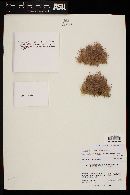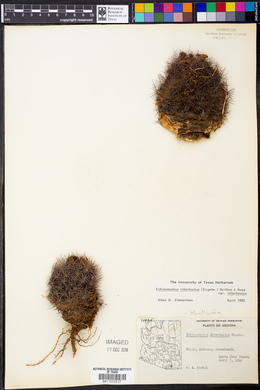Echinomastus intertextus var. intertextus
|
|
|
|
Family: Cactaceae
|
Stems spheric when young, ovoid to ovoid-cyli ndric with age, appear-ing smooth and easily handled. Spines closely appressed, except for the porrect abaxial central spine, which is 0.5-4(-5) mm. 2n = 22. Flowering Feb-Apr; fruiting Apr-Jun. Desert grasslands and plains grasslands, grassy hills, bajadas, sometimes with junipers or oaks, on igneous substrates (rarely limestone); 1000-1900 m; Ariz., N.Mex., Tex.; Mexico (Chihuahua). Most published records of Echinomastus intertextus from central New Mexico, and many from southern New Mexico, probably pertain to var. dasyacanthus; the varieties replace each other geographically, but many populations in south-central New Mexico may be intermediate, containing long-, medium-, and short-spined individuals. Although not documented for Sonora, var. intertextus is known less than one kilometer from the Mexican border in southeastern Arizona.
FNA 2003 Common Name: white fishhook cactus Duration: Perennial Protected Status: No status in Arizona. General: Similar to E. intertextus except that it is spheric when young and ovoid to cylindric with age, while appearing smooth and easy to handle. Spines: Simliar to E. intertextus except that the radial spines and adaxial central spines are closely appressed, while the abaxial, porrect central spine is 0.5-5 mm. Flowers: Diurnal and borne at adaxial edge of areoles or near stem apex, campanulate or funnelform and 1-7 cm long and 1-7 cm broad with outer tepals of greenish lavender, reddish, yellowish-brown, or with purple midstripes, and white, cream, gold, rose, pink, or purple margins, and inner tepals that are erect to ascending and white and 1.5-3.5 mm. Fruits: Fruits green but often turning tan, pink, or red, cylindric to subspheric, 4-30 mm long and 3.5-25 mm diameter, thin walled but fleshy and becoming dry at maturity, they are naked or with a few broad, thin scales, the pulp greenish to white and scant, whi Ecology: Found on igneous substrates in desert grasslands, on bajadas, and in juniper and oak woodlands from 3,500-6,500 ft (1067-1981 m), flowers February-April, fruits April-June. Notes: Following TROPICOS, USDA Plants has the accepted name as Echinomastus intertextus, and also treats Sclerocactus intertextus var. intertextus as the same as Echinomastus intertextus. FNA states that there has been considerable controversy concerning the treatment of Sclerocactus. Some treatments include Ancistrocactus, Echinomastus, Glandulicactus, and Sclerocactus as a single genus, wheras others exclude those groups, in addition to Toumeya, from Sclerocactus. Distinguished by the closely appressed radial and adaxial central spines. Ethnobotany: Unknown Etymology: Echinomastus comes from from the Greek echinos, a hedgehog and masto for a breast, while intertextus means intertwined in some way. Synonyms: Sclerocactus intertextus Editor: LCrumbacher, 2010 |

